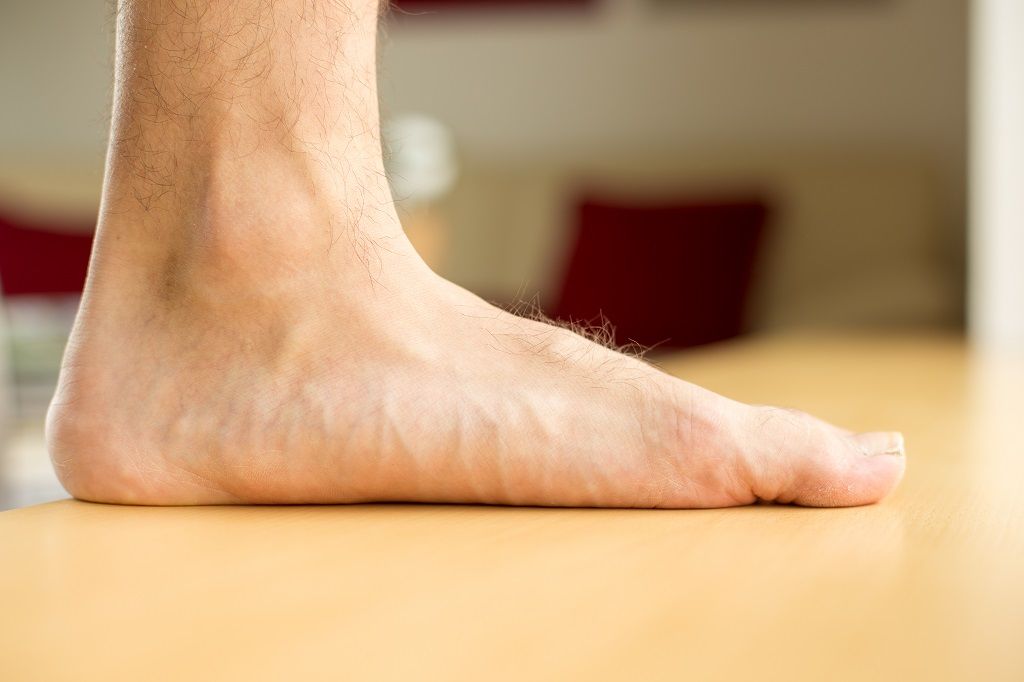Flat foot

Flat foot
Flat foot, or pes planus, is a condition characterized by a minimal or absent arch in the foot. It can occur in both children and adults and may range from a normal anatomical variation to a pathological condition requiring medical attention.

Understanding Flat Foot in Different Age Groups
Children:
• In young children, flat feet are often normal and part of development.
• The arch typically forms by the age of 9 or 10 years.
• If the arch does not develop or the foot appears stiff or painful, further evaluation may be required.
Adults:
• In adults, flat feet can be classified as flexible or rigid:
• Flexible Flat Foot: The arch is visible when the foot is not bearing weight but flattens under pressure.
• Rigid Flat Foot: The arch remains absent, even without weight-bearing, and is often associated with stiffness and pain.
• Adult-acquired flat foot often results from tendon dysfunction, arthritis, or trauma.
Causes of Flat Foot
1. Congenital Causes:
• Tarsal coalition: Abnormal fusion of foot bones, leading to stiffness and flatness.
• Genetic predisposition.
2. Acquired Causes:
• Posterior tibial tendon dysfunction.
• Arthritis, particularly in the midfoot or hindfoot.
• Obesity or rapid weight gain causing joint laxity.
• Trauma or overuse injuries.
Symptoms of Flat Foot
• Pain, especially along the inner border of the foot and ankle.
• Swelling on the inside of the ankle.
• Tingling or numbness due to nerve compression.
• Difficulty in walking or running.
• Stiffness or deformity in advanced cases.
When to Seek Medical Attention
• One-sided flatness or deformity.
• Sudden flattening of the arch in adulthood.
• Persistent pain, stiffness, or swelling.
• Symptoms unresponsive to conservative management.
Diagnosis
• Physical Examination: Assessment of foot alignment, flexibility, and tenderness.
• Imaging:
• X-rays: Evaluate bone alignment and arthritis.
• MRI: Assess tendon integrity and rule out soft tissue injuries.
• CT scan: Helpful in identifying tarsal coalition.
Stages of Flat Foot Progression
1. Stage 1: Tendon inflammation without deformity.
2. Stage 2: Obvious deformity but no stiffness.
3. Stage 3: Painful deformity with stiffness and arthritis.
4. Stage 4: Deformity extends to the ankle joint, causing significant pain and immobility.
Treatment Options
Non-Surgical Treatments:
1. Lifestyle Modifications:
• Weight management to reduce pressure on the feet.
• Avoid high heels and wear supportive footwear.
2. Orthotics:
• Custom insoles to support the arch and alleviate symptoms.
3. Physiotherapy:
• Strengthening exercises for foot and ankle tendons.
• Stretching routines for flexibility.
4. Pain Management:
• Anti-inflammatory medications.
• Warm foot soaks with salt and ajwain for pain relief.
Surgical Treatments:
Surgery is considered when non-surgical options fail or for severe deformities. Modern techniques include:
1. Calcaneal Osteotomy:
• Corrects heel bone alignment to restore the arch.
• Often minimally invasive.
2. Tendon Transfer:
• Replacing damaged tendons (e.g., posterior tibial tendon) with a healthy tendon from another part of the foot.
• Preserves functionality and supports the arch.
3. Joint Fusion:
• For advanced arthritis (Stage 3 and 4).
• Fuses affected joints to eliminate pain and restore stability.
4. Subtalar Arthroereisis:
• A minimally invasive procedure using an implant to support the arch.
• Ideal for flexible flat foot in younger patients.
5. Ligament Reconstruction:
• Repairs or strengthens ligaments to stabilize the arch.
Home Remedies for Flat Feet
• Foot Soaks: Warm water with salt or ajwain to reduce pain and inflammation.
• Stretching Exercises: Improve flexibility and strength.
• Supportive Shoes: Avoid heels and use cushioned, well-fitted footwear.
Key Takeaways
• Flat foot is common and often normal in children but may require attention if painful or stiff.
• In adults, it can result from structural or functional issues and may worsen without intervention.
• Treatment ranges from lifestyle modifications and physiotherapy to advanced surgical procedures.
• Early diagnosis and tailored treatment can help alleviate symptoms and restore function.
If you suspect abnormal flat foot, consult for a comprehensive evaluation and personalized management plan.
.png ?>)